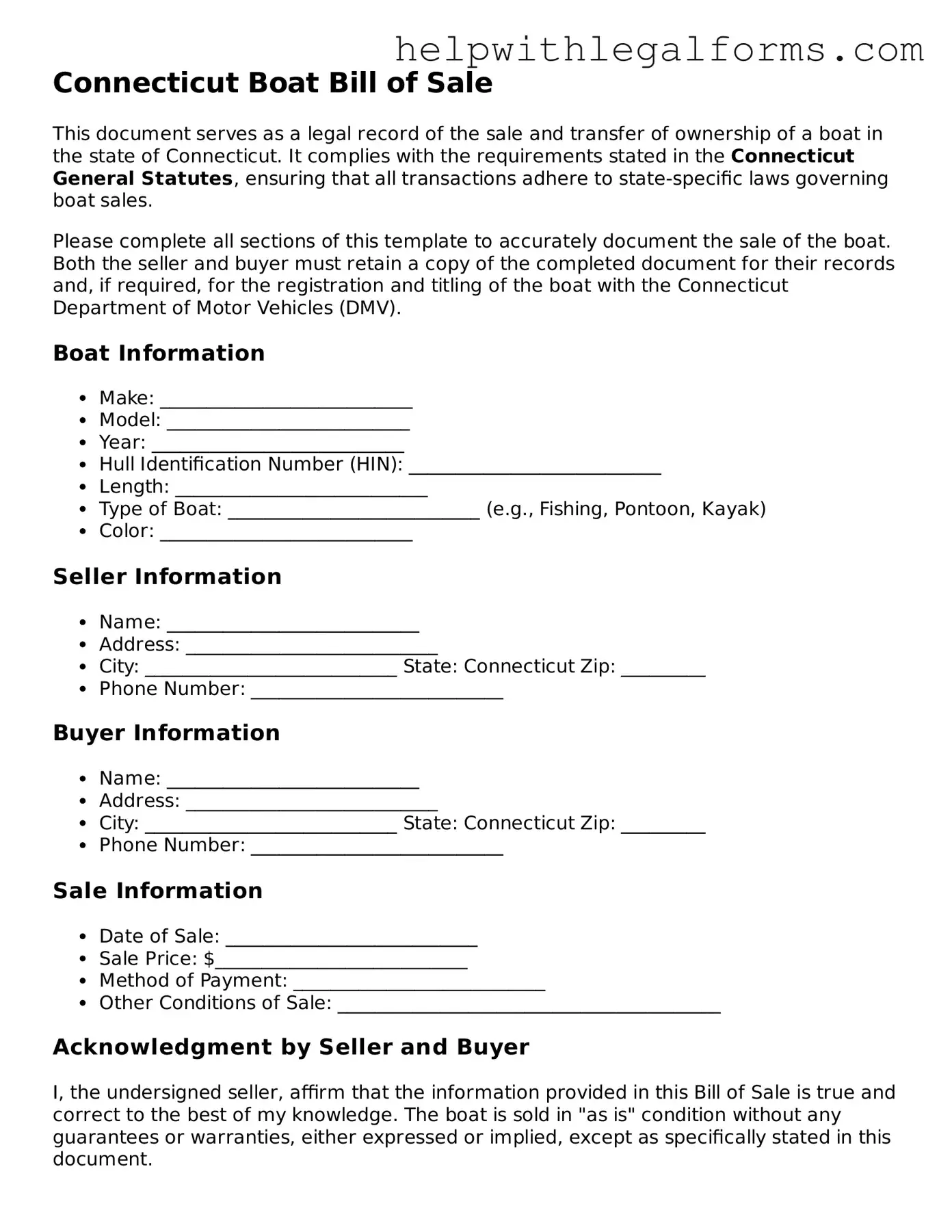What is a Connecticut Boat Bill of Sale?
A Connecticut Boat Bill of Sale is a legal document that records the sale and transfer of ownership of a boat from a seller to a buyer within the state of Connecticut. It acts as a proof of purchase and includes important details such as the price of the boat, description of the boat, and the personal details of both the buyer and the seller.
Why do I need a Boat Bill of Sale in Connecticut?
Having a Boat Bill of Sale in Connecticut is crucial as it not only serves as evidence of the sale but is also required for the registration of the boat. Connecticut law mandates the registration of all boats used on its waters, and the bill of sale is vital for documenting the legitimacy of the transaction and ownership.
What information should be included in a Connecticut Boat Bill of Sale?
The Connecticut Boat Bill of Sale should include the full names and addresses of both the buyer and the seller, a detailed description of the boat (including make, model, year, and Hull Identification Number), the sale price, the date of sale, and signatures of both parties involved. It's also recommended to mention any warranties or the sale being "as is".
Is notarization required for a Boat Bill of Sale in Connecticut?
No, the state of Connecticut does not require a Boat Bill of Sale to be notarized. However, having it notarized can add a layer of legality and protection for both parties involved in the transaction.
Can I create my own Boat Bill of Sale, or do I need a lawyer?
While you can create your own Boat Bill of Sale, it must meet the legal requirements of the state of Connecticut. Using a template or consulting with a legal professional to ensure all necessary details are included is advisable for peace of mind and legal protection.
What happens after I complete the Boat Bill of Sale?
After the Boat Bill of Sale is completed, both the buyer and the seller should keep a copy for their records. The buyer will need the document for boat registration with the Connecticut Department of Motor Vehicles (DMV) or the appropriate maritime authority, along with any other requested documentation and applicable fees.
Does a Connecticut Boat Bill of Sale need to be registered or filed with the state?
While the Boat Bill of Sale itself does not need to be registered or filed, it is necessary for the registration process of the boat. The buyer must present the Boat Bill of Sale, among other documents, to the Connecticut DMV for the boat's registration and to legally operate it on Connecticut waters.
What if I lose my Boat Bill of Sale?
If you lose your Connecticut Boat Bill of Sale, it's important to ask for a duplicate from the other party if possible. In cases where this isn't an option, drafting a new document with all the original details and having both parties sign it again (if possible) is advised. This document serves as an essential proof of ownership and sale, so keeping it safe is important.
